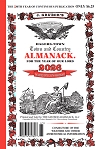Dairy and Livestock
MANAGING SHEEP
Sheep hate to be alone. If you’re just starting out, buy two or three female lambs instead of one.
Ewes will need a ram to breed with, but they should be kept in a separate pasture so you can control when they breed. For example, if you put your ram in with the ewes in November, you will likely have lambs in late March — just in time for lush spring pastures. When lambing is imminent, it’s a good idea to separate your rams from the ewes. They tend to harass the mothers and babies at a vulnerable time in their lives.
Sheep evolved surviving entirely on natural pasture, but some breeds have lost that adaptation entirely. A mineral block or mineral lick should be available to order to provide salt and trace minerals necessary to a healthy diet.
CALVING TIPS
It is recommended to keep cows out of the calving area for at least 30 to 45 days prior to calving to reduce the amount of manure in the area. If you are using the barn to provide shelter, consider reducing the amount of space allotted to the cows and save a portion of it for calving time. Providing a clean and dry environment for calves will go a long way in protecting the future of your herd.
Cold stress in calves can occur when temperatures fall below 60 degrees F. for calves under 21 days of age and 42 degrees F. for calves over 21 days of age. But when it’s 30 degrees F, calves will need 30 percent more energy just for maintenance and this goes up the colder it gets. Here are 5 five tips to help manage cold-stressed calves.
Bedding Management - Bedding provides a method for the calf to reduce heat loss and is a source of insulation. An adequate bedding nest can help decrease the incidence of respiratory disease, as calves are able to use energy to maintain their immune systems instead of expending fat reserves to support body heat regulation.
Feeding Three Times per Day - Research has shown that feeding milk replacer three times per day will help stabilize the pH in the rumen of the calf for better feed efficiency. Increased starter intakes and increases in total body volume are also key in supporting better results from three feeding times per day.
Use Calf Jackets - The use of clean, dry calf jackets has been shown to increase the internal temperature of a calf by 25 degrees F.
Giving free-Choice Water - Providing good quality water to calves is crucial not only for maintaining hydration status, but also for adequate rumen development. In the winter months, it is best to feed warm water soon after feedings so calves get used to drinking before they lie down and the water freezes.
Providing enough nutrition. Energy needs will be met by diverting resources from growth and body reserves. Plan your feeding program to provide the additional energy needed during cool weather periods. Implementing a calf starter that is formulated for supporting growth during the winter months is essential for consistent growth rates.
SOME OTHER THINGS TO CONSIDER
Milk fever in dairy cows can be prevented by feeding large amounts of vitamin D for a few days before calving.
After calves have reached six months of age they can be grown better and cheaper on good pasture or corn silage and good alfalfa hay than on any other feeds, and a well-bred cow is largely made or unmade the first 15 months of her life.
FEED YOUR HORSES PROPERLY
Feed little and often. Approximate the horse's natural tendency to graze constantly, presenting the grain in three or four small feeds per day, instead of one large one, will lessen the chance of colic by allowing the gut to maintain constant levels of the bacteria needed to digest food.
When handling your goats, use a rope halter (available at most farm supply stores). If your goats have horns, these can also be held to control them. though some goats do not like this. It is best to have a second person to assist you. Handling your goat too roughly will cause him to struggle more, so the best amount of restraint is just enough to keep him still.
Tethering your goats (putting them on a long leash) is not recommended as it can be stressful for them. Tethering is also very dangerous because a goat can accidentally hang himself on a tether..
Avoid buying cattle with mucus coming from the nose or that have swollen legs or joints. These symptoms may indicate illness or even an infection, which can be passed to other cattle and, in some cases, humans.
The best time of the year to buy commercial beef cattle is in the Fall. Most beef cattle and calves raised on pasture are marketed then and thus bred cows offered for sale are cheaper at that time than in the Spring.
Choose cattle based on their breed and the weather conditions they are traditionally capable of withstanding. If your region experiences cold, bitter conditions in the Winter, then opt for a breed like the Scotch Highland or Galloway that are accustomed to surviving and foraging during coarse Winter weather. On the other hand, the American Criollo breeds are descendants of Spanish cattle and were bred to temper more moderate and hot climates. Senepol, Ankole-Watusi, Sanga and any Zebu breed cattle are originally from hot African, Asian and Middle Eastern climates and can stand the extreme heat on southern farms during the Summer months.
By researching your local area’s current cattle supply and ongoing industry trends, you’ll be able to determine the best cattle breed for your climate and your goals.
Sheep get really dirty! You have to clean their bottoms or any area that is matted or caked with mud or feces regularly. Naturally, they have a hard time getting all of their waste out of their hair. When you shave the area around their bottoms and down their legs, this is called "crutching”. That is because you are cleaning the area known as their crutch.
When cleaning the mud and matted hair from under their bellies, this is called ‘dagging’ a sheep. This terminology is a good thing to know when you need to reach out to more resources on how to perform such tasks.


















